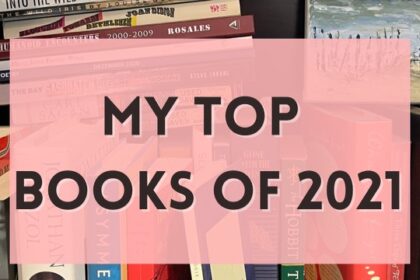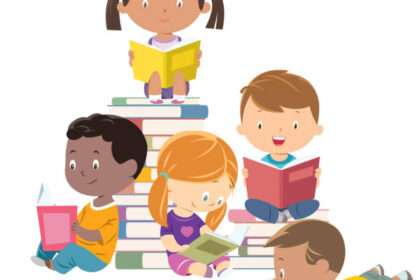Because if we’re being honest, there is only one list that matters in the world of book publishing, book selling, and book reading.
The New York Times Bestseller List.
I religiously read the NYT best seller list every morning.
But I must admit, I had (maybe still have?) major beef with the best seller list. I always believed the list should be based on a literary meritocracy. In other words, I wanted the answer to the question what are the best books? and instead I was receiving an answer to the question what books are making the most money?
I had the incredible opportunity to work for a Literary Scout in Manhattan this past summer, and every Friday we discussed what we were reading over a delicious meal (usually at a French restaurant with cappuccinos). One particular Friday, Sally Rooney was brought up.
(Before I say what I am about to, you need to know something about me. I am a highly pretentious reader, which I make fun of myself for constantly and am quite comfortable admitting. For years, I prided myself on curating my own reading taste, refusing to read what was popular because I deemed myself too high brow! Why read Colleen Hoover when you could read Jane Austen? That was how I really thought, and sometimes still think, and it makes me laugh even putting it into words, because I am fully aware that it is ridiculous).
My boss, Barbara, conveyed to me how much she adored Sally Rooney’s first novel, Conversations with Friends. I told her that I was hesitant to read it because of how popular it had been. And then, in traditional pretentious-Isabel fashion, I said the most blasphemous thing one could possibly say to a publishing professional:
“If it’s selling that well then it probably isn’t any good.”

WHAT! It’s a miracle I didn’t get fired. But following this ridiculous assertion, Barbara responded with a comment that changed my outlook on the publishing world altogether.
“Best sellers are best sellers for a reason.”

It seems so simple, so logical, and yet, I had never thought of popular books in this light. People like these books. I am not special enough to be immune to the influence of popular books. Maybe, just maybe, if this is the world that I want to work in, I should be reading the best sellers!
So, low and behold, I bought the Sally Rooney book. More on that later.
But first, before I delve into a rhetorical analysis of the methods by which this list wields power, I believe a brief history lesson is in order.
- The first New York Times best seller list was published (rather unsuccessfully) in October of 1931, and it has run continuously ever since.
- The first list consisted of only nine titles, ranked based on sales in New York City only
- Gradually, lists for other cities were added
- In 1942, the first national best seller list was published, which gradually replaced the city lists
- Today, the New York Times is the leading source of information for readers, publishers, and authors
- Status as a New York Times best seller can increase a book’s sales by up to 57%
Clearly, this list is the gold standard for all things publishing. If you’re an author, you want to get on the list. If you’re a publishing house, you want to have more of your titles on the list than any other house. If you’re a reader, you either a) check the list to see what to read or b) check the list and feel vindicated when something you’ve already read pops up.
Everyone gives a shit about this one list. Why is that?
The New York Times Best Seller List wields SO much power.
But how?
Let’s talk about the list.
In doing so, I will be arguing that this list operates as a mechanism to drive book sales nationwide, with financial profit as the end goal. The list does not care what books are good or hold literary value, the list cares about what books make money, which its rhetorical design illustrates repeatedly.
It is a best seller list, not a best written list.
Let’s start with the title. The New York Times Best Seller List does not claim to be a ranking of the best books on the market right now (if such an objective thing even exists), and it is not based on critical reviews. The list is based solely on sales, which heavily influences who and what is featured therein (resulting in the frequent exclusion of minority authors). The list as an entity is based on profit.
And it works! Because we as humans are collective creatures who enjoy community, conveying what other people are buying elicits an avalanche of more buying. We don’t want to be the one person left in the world who hasn’t read Gone Girl!
Basically what I’m saying here is that by basing the list on sales rather than reviews, The List is peer pressuring you into buying certain titles. And clearly it works. The list has been known to take my lunch money.

It features photos of the book covers
The list could simply list the titles of the books, and that would compromise a best seller list. However, the list goes a step further in featuring photos of the book covers above the title.
This rhetorical strategy imprints an image of the book cover into the reader’s mind, and contemporary best sellers typically feature bright, color-blocked covers with memorable fonts, titles, and images. Vibrant, eye catching cover art is easily recognizable, which is precisely the point.
Incorporating these images is an intentional choice made with the intention of driving profit sales.
When a reader is wandering a bookstore, she may not remember the title of the new New York City crime book on the list. But she may remember the yellow, green, and red cover, recognize the cover in a store display, and then purchase Colson Whitehead’s Harlem Shuffle as a result.
Again, they tricked you into spending money! You may think you have independent will, but the list would say differently. Even with books, it’s all about money! Arggghhh!
Positions books as players competing in a sport
Americans love competition. We all know this. Our whole culture is practically centered around winning and losing.
By making the central component of this list a ranking system, the best seller list is functionally not that different than college football rankings. Both are released on Sundays, remain static for a week, and then reshuffle according to the activities of the week. We await the rankings to see how our team held up, and what underdogs are on their way up.
The list calls our attention to the intentional gamification of bookselling, as it also conveys how long each title has been on the list.
We may not care who wins, but we love to watch the game play out. After all, I come back every day to check the score.
It literally asks you to buy it!
If all of this weren’t evidence enough, under each best selling title there is a blue button that says “BUY”.
They really weren’t trying to be subtle at all.
Links under the button take the user to Amazon, Apple Books, and several other large scale, profit-driven corporations. They do not want you to buy from local independent booksellers, they want you to buy from their partners.
Why you may ask?
Money! It’s all about money! Freaking capitalism!
So, indeed, best sellers are best sellers for a reason. But that is not based on some literary meritocracy, it is calculated.
The New York Times Best Seller list wields so much power because it was designed that way. Features of this page persuade the reader to buy the best sellers each and every week, and it works quite well.
Although I do hate the financial motivation behind this list, the list does call more people to read more books. Which is pretty cool. I guess I can’t be that mad about it.
So yeah, I read the Sally Rooney. I read it in one sitting. And I loved it.





[…] story of my coming to read the work of Sally Rooney, which I’ve described in more detail in a separate blog post. Just three months ago, in July, I, in all of my snobbery, looked down upon Sally Rooney fans. I […]